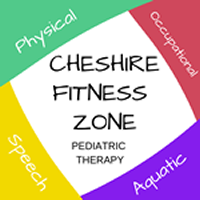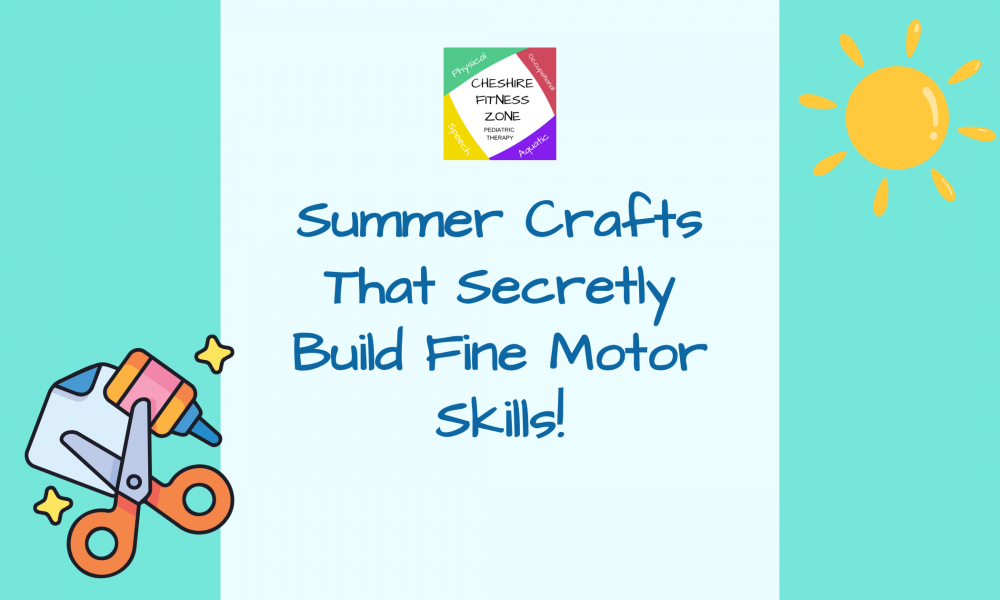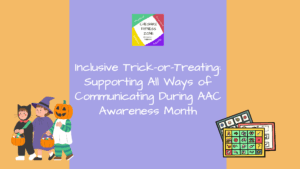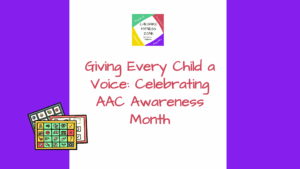Summer Crafts That Secretly Build Fine Motor Skills
When the sun’s out and school is winding down, craft time becomes the perfect mix of creativity and skill building. Some of the most effective therapy often looks like play, and summer crafts are a great way to keep kids engaged while reinforcing the progress they’ve made in therapy.
From squeezing puffy paint to threading beads, these activities help develop the small muscle groups in the hands and fingers (called fine motor skills), while also building coordination, planning, and sensory regulation. Bonus: they’re simple, screen free, and a great way to connect with your child.
Here are fun, summer-themed crafts that feel like play but secretly pack in a lot of therapeutic value.
Puffy Paint Ice Cream Cones
Why it helps: Mixing and squeezing puffy paint strengthens hand muscles, encourages finger isolation, and provides a fun sensory experience that supports self-regulation and creativity.
Try it:
Mix equal parts shaving cream and white school glue in a bowl. Add a few drops of food coloring or washable paint and stir gently. Draw or print an outline of an ice cream cone, then use the paint mixture to scoop different colors on top. Let it dry for a fluffy, textured look.
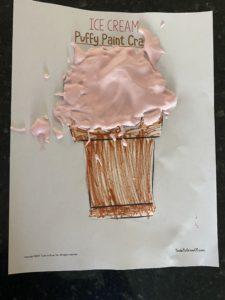
One of our Occupational Therapists, Ms. Molly, recently tried out this craft with one of her kiddos!
Paper Plate Watermelons
Why it helps: This craft supports scissor skills, especially cutting curves, hand-eye coordination, and visual motor integration, all important for tasks like handwriting and dressing.
Try it:
Cut a paper plate in half to form a watermelon slice. Paint the center red or pink and the outer edge green. Once dry, glue on buttons, pom-poms, or black paper dots as seeds. Let your child use tweezers or their fingers to place each piece. It’s a great pincer grasp workout.
Straw Bead Threading
Why it helps: Threading supports bilateral coordination, pincer grasp, and visual tracking, which are key skills for tying shoes, using utensils, and other daily tasks.
Try it:
Cut plastic drinking straws into 1-inch pieces to create colorful beads. Give your child a shoelace, piece of string, or pipe cleaner and let them thread the straw pieces one by one. Add a twist by encouraging patterns or using tongs to pick up the pieces before threading.
Tear and Glue Sunshine Art
Why it helps: Tearing paper builds hand strength and coordination, while gluing and assembling promotes planning, sequencing, and focus. It’s also a good way to practice patience and follow-through.
Try it:
Have your child tear strips of yellow and orange construction paper or scrap paper into sun rays. Cut a circle for the sun’s center and glue the rays around it. Kids can add a smiley face, sunglasses, or glitter to personalize their creation.
Sidewalk Chalk Obstacle Course Signs
Why it helps: Making signs combines fine motor work like drawing, writing, and coloring with movement planning and gross motor integration. Plus, it encourages kids to take the lead and build their own environment, which is great for confidence.
Try it:
Have your child create signs that say Jump Here, Spin in a Circle, or Touch Your Toes. Tape them to craft sticks, cardboard, or paper plates. Then build a simple obstacle course outside and let them follow or lead the course using their signs.
Get Crafty This Summer!
When kids create with their hands, they’re also building skills that support everyday tasks like writing, feeding, dressing, and more. These summer crafts are easy to do at home, fun for the whole family, and filled with therapeutic benefits even if they just look like messy, creative fun.
Need more activity ideas to support your child’s therapy goals? Our team at Cheshire Fitness Zone is always happy to help guide you with play-based strategies that make progress part of everyday life.
